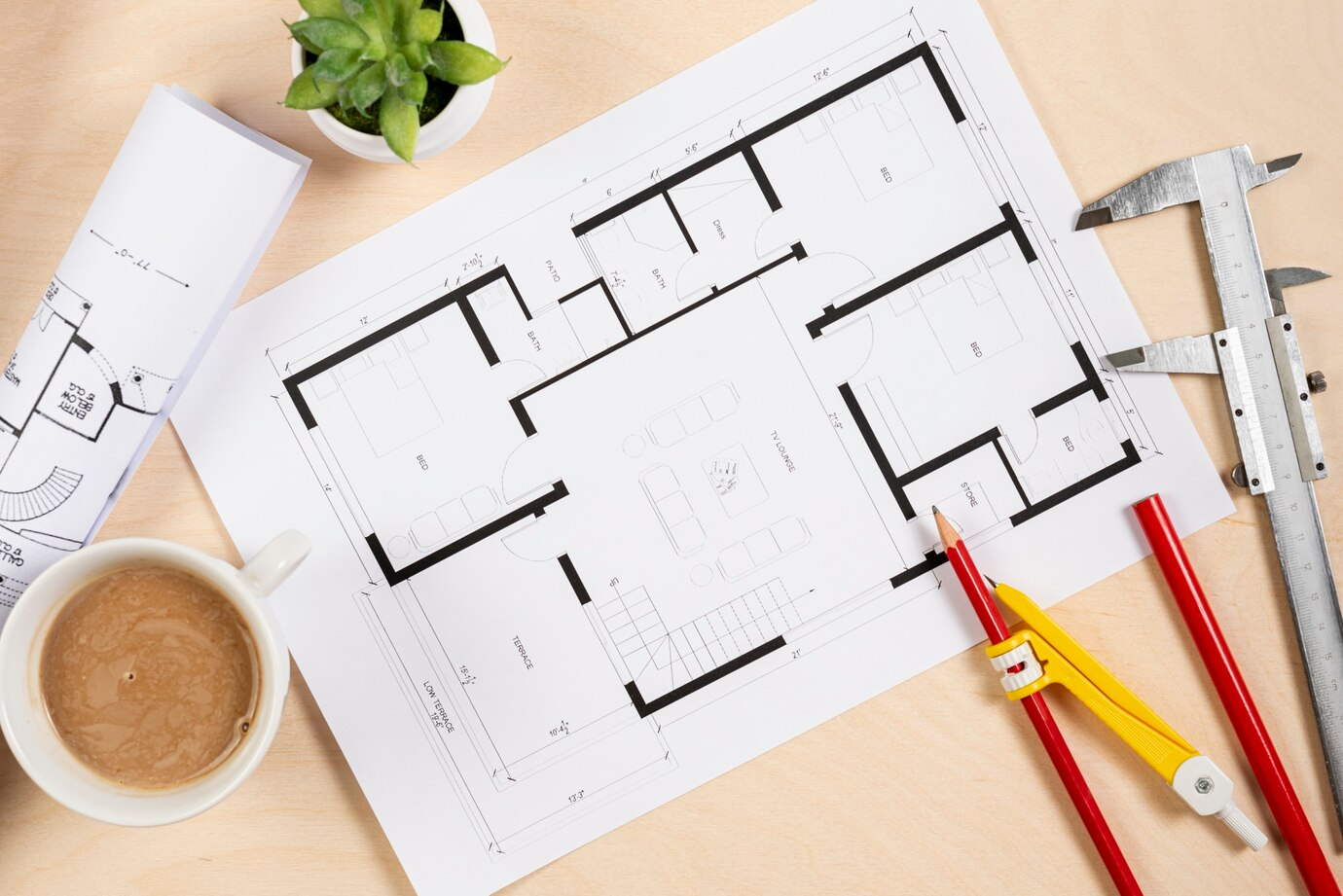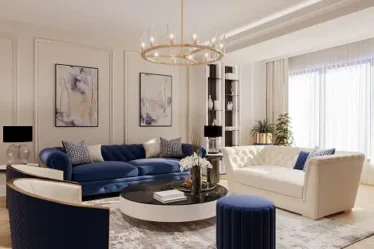
The arrangement of a physical space has long been recognized as a critical factor in shaping human behavior, mood, and productivity. Whether it’s a home, an office, a retail store, or a public space, the design of the layout plays a pivotal role in how individuals interact with their environment and, by extension, with each other. From boosting creativity to reducing stress, the importance of thoughtful space planning cannot be overstated.
The Psychology of Space
The connection between spatial layout and human psychology has been the subject of extensive research. People intuitively respond to the spaces they inhabit, often without realizing it. For example, open layouts in homes encourage interaction and foster a sense of togetherness, while compartmentalized spaces can provide privacy and reduce distractions. Similarly, in office environments, layouts that blend private and collaborative areas cater to diverse work styles, improving overall employee satisfaction.
Spatial arrangement influences not only emotional well-being but also cognitive performance. Studies show that cluttered or poorly designed spaces can lead to higher levels of stress and mental fatigue. Conversely, well-organized layouts create a sense of order and clarity, enabling occupants to focus better on tasks and feel more at ease.
Key Elements of Effective Layout Design
Designing a functional and aesthetically pleasing layout requires consideration of several key elements. Each of these factors contributes to the overall experience of a space and its usability.
1. Purpose and Functionality
A layout must align with the primary purpose of the space. For instance, a living room designed for socializing should prioritize comfortable seating and easy circulation, while a workspace might focus on ergonomic furniture and access to natural light. Clarity in purpose ensures that every square foot is utilized effectively.
2. Flow and Circulation
The way people move through a space is crucial to its functionality. A poorly planned layout can lead to bottlenecks or underutilized areas, causing frustration and inefficiency. By carefully planning pathways and considering how users will navigate the area, designers can create layouts that feel natural and intuitive.
3. Balance Between Open and Closed Spaces
The debate between open versus closed layouts often hinges on the context of the environment. Open spaces encourage interaction and a sense of spaciousness but can also lead to noise and a lack of privacy. On the other hand, closed or segmented spaces offer intimacy and focus but can feel isolating. The key is to strike a balance that meets the needs of the users.
4. Lighting and Ambiance
Light plays a significant role in defining how a space feels and functions. Natural light is often considered the gold standard, enhancing mood and energy levels. When natural light isn’t available, strategically placed artificial lighting can create zones within a space, highlighting key areas and fostering an inviting atmosphere.
Layouts in Different Contexts
Different types of spaces demand different layout strategies. Whether it’s a residential area, a commercial building, or a public venue, the layout must cater to specific user needs and contextual demands.
Residential Spaces
In homes, layouts often reflect the lifestyle of the occupants. Open-plan designs have grown in popularity for their ability to blend kitchen, dining, and living areas, creating a unified space ideal for socializing. However, this trend may not suit everyone, particularly those who value quiet and privacy. By using tools like a floor plan creator, homeowners can visualize different configurations and choose one that meets their unique preferences.
Bedrooms and bathrooms, in contrast, are designed for relaxation and self-care. These areas benefit from layouts that prioritize privacy, tranquility, and functionality. Good spatial planning can enhance these qualities, ensuring a harmonious living environment.
Workplaces
The modern workplace has undergone a seismic shift in recent years, moving away from rigid cubicle systems to more dynamic layouts. Flexible workstations, standing desks, and collaborative hubs have become common in contemporary office design. Such layouts encourage creativity and teamwork, but they also recognize the importance of quiet zones for focused work.
Hot-desking and coworking spaces add another layer of complexity, as they require layouts that cater to transient users while still fostering a sense of community. Here, modular designs and movable partitions can provide the adaptability needed for such environments.
Retail and Hospitality
In retail, the layout directly influences customer behavior and sales. Strategic placement of products, clear pathways, and inviting entrances are all crucial in guiding shoppers through the space. Hospitality environments, such as restaurants and hotels, require layouts that balance aesthetics with functionality. A restaurant layout, for example, must ensure smooth service flow while offering diners a comfortable and appealing setting.
Public Spaces
Parks, museums, and transportation hubs are designed with inclusivity and accessibility in mind. These spaces must accommodate diverse user groups and ensure easy navigation. Intuitive layouts can make these environments feel welcoming and user-friendly, enhancing their utility and appeal.
Technology and Space Planning
Modern technology has revolutionized the way spaces are planned and designed. Digital tools allow designers to experiment with various layouts, making it easier to visualize and refine concepts before implementation. A floor plan creator, for instance, enables users to test multiple configurations, ensuring that the final design meets both aesthetic and practical goals.
Moreover, smart technology can enhance the adaptability of spaces. Automated systems that adjust lighting, temperature, and furniture configurations in response to user needs exemplify how innovation can improve spatial experiences. These advancements are particularly valuable in multifunctional spaces, where the same area might serve different purposes at different times.
The Role of Sustainability
Sustainability has become a central consideration in modern design, influencing not just materials and energy use but also layout decisions. Compact and efficient layouts reduce the need for excessive resources, while designs that maximize natural light and ventilation can lower energy consumption. Green building certifications often emphasize layout planning as a critical component of sustainable design.
For example, layouts that incorporate shared spaces, such as communal kitchens or coworking areas, encourage resource efficiency and foster a sense of community. Similarly, adaptive reuse of existing structures often involves creative spatial planning to meet contemporary needs while preserving historical integrity.
Future Trends in Layout Design
The evolution of layout design is shaped by societal changes, technological advancements, and emerging challenges. Hybrid spaces that blend work, leisure, and living areas are becoming more common, reflecting the increasing fluidity between professional and personal life. These layouts often rely on modular designs that can adapt to shifting needs.
Another trend is the integration of biophilic design principles, which emphasize the connection between humans and nature. Layouts that incorporate natural elements, such as greenery and water features, not only enhance aesthetics but also promote well-being.
Finally, the growing focus on inclusivity is driving the creation of spaces that accommodate a wide range of needs, from wheelchair accessibility to sensory-friendly environments. Thoughtful layouts can ensure that spaces are welcoming and functional for everyone, regardless of their abilities.
Conclusion
The layout of a space is far more than an arrangement of walls and furniture; it is a powerful tool that shapes experiences, influences emotions, and drives behavior. By understanding the interplay between design, functionality, and human psychology, it is possible to create environments that inspire, comfort, and connect people.
Whether through the use of a floor plan creator to visualize possibilities or by embracing principles of sustainability and adaptability, the process of space planning offers endless opportunities for innovation. In a world where every detail matters, the layout of a space is a silent force that shapes how we live, work, and interact with the world around us.

